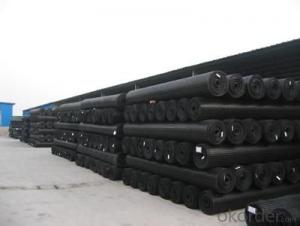Geotextile filter cloth is a term that may seem unfamiliar and technical to many, but it is actually a versatile and necessary material in various industries. It comprises of fabric woven or knitted from synthetic fibers such as polyester, polypropylene or nylon for the purposes of filtering and separating different materials while retaining its own structure. I first came across geotextile filter cloth during one construction project; its usefulness and efficiency still linger in my mind.
The Miracle of Geotextile Filter Cloth
When I learnt about geotextile filter cloth, what rushed into my mind was its potential uses. It is not just another kind of fabric; rather, it provides solutions to numerous construction problems as well as environmental ones. It is noteworthy that this material maintains filtration and separation properties while preserving the integrity of its structure. Thus, it can be used for soil stabilization purposes, erosion control among others even to filter water.
Versatility in Construction
The construction industry has an important use for geotextile filter cloth. It is utilized to reinforce soil against erosion thus ensuring that structures do not crumble down. I have seen it working: how it can hold back tons of soil forming strong base for roads, buildings and other infrastructures is simply amazing. This explains why engineers’ favorite material are always made out of this stuff because their strength cannot be matched by any other type found on earth.
Environmental Impact
Apart from construction work, geotextile filter cloth contributes significantly to environmental conservation too. In landscaping and gardening fields it helps improve soil texture so that loss of topsoil resulting from running off soils due to erosions can be avoided. Personally, I had an experience when I used it for protecting my garden’s soil from heavy rains which made a noticeable difference afterwards too. Henceforth, environmental protection now has a new dimension following the discovery that the material filters out water while letting particles pass through.
Water Filtration and Management
The use of geotextile filter cloth in water filtration and management is a marvel. It is used to remove sediments and pollutants from water that makes it cleaner for different purposes. In fact, I have witnessed its application in ponds and lakes that maintain the quality of water, which was truly marvelous. Being permeable to water but capable of retaining impurities, this fabric ensures cleaner aquatic environment.
Personal Experience with Geotextile Filter Cloth
My personal experience with geotextile filter cloth has been quite positive. I have used it for several projects and it has always turned out to be incredible. Whether strengthening the soil in my garden or screening water within a small pond, it can be said that they are reliable solutions as well as efficient ones too. The material’s versatility and durability have made it an indispensable tool in my projects.
The Future of Geotextile Filter Cloth
As we look into the future, the applications of geotextile filter cloth are expected to increase significantly. This material is set to play significant role amidst growing global awareness on issues affecting the environment as well as need for sustainable ways of doing things. I cannot wait to see what will happen next because there will be new ways how this kind of materials shall be evolving in order to address our challenges at hand creatively.
Conclusion
To sum up, geotextile filter cloth is not just a fabric, but a solution for many problems we encounter in building, environmental conservation and water management. In different industries, its adaptability, strength and long life make it precious material. My thoughts about geotextile filter cloth would be incomplete without paying homage to such an amazing product. It is not only about the technical aspects; it is also about how its presence affects our lives and the world around us. Certainly, this is proof of human creativity and progressiveness in Geotextile filter cloth.







